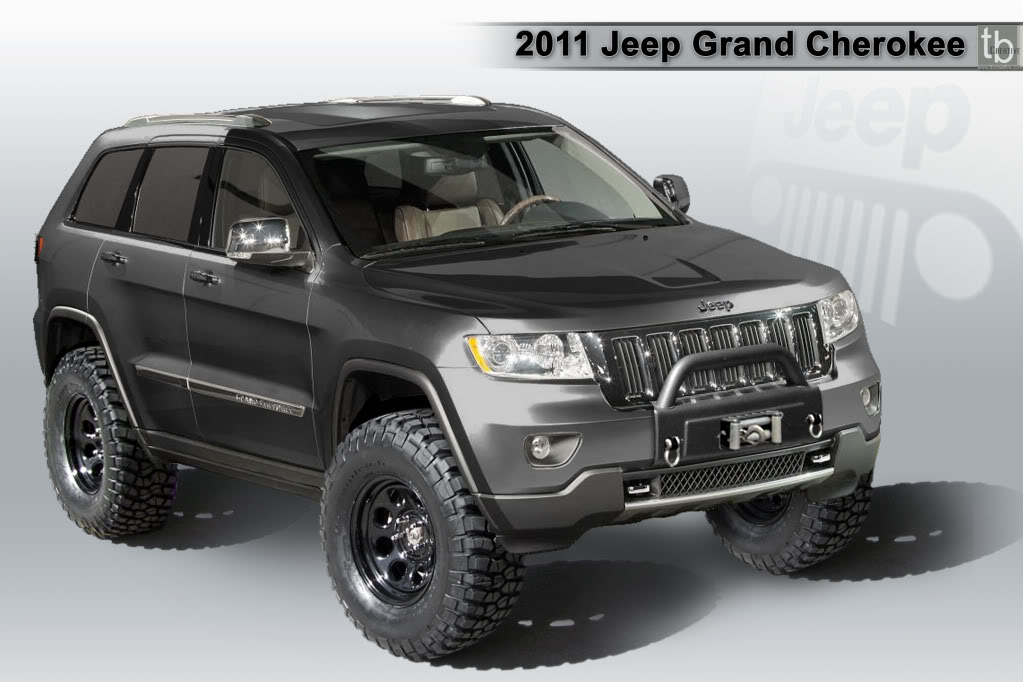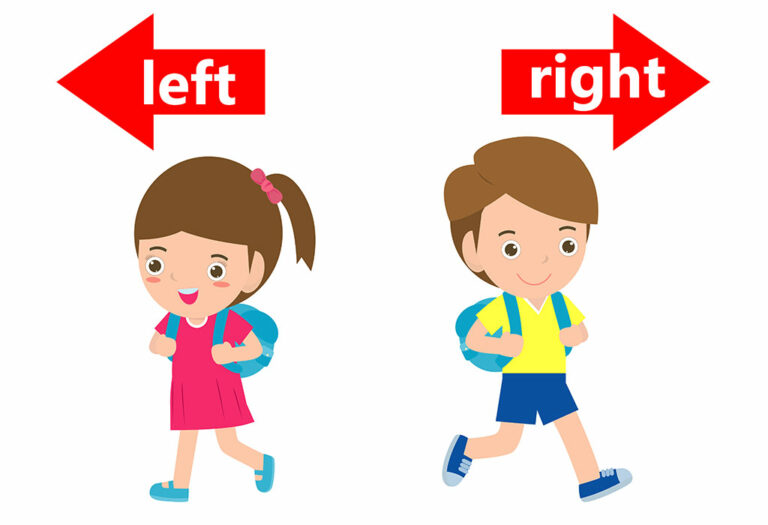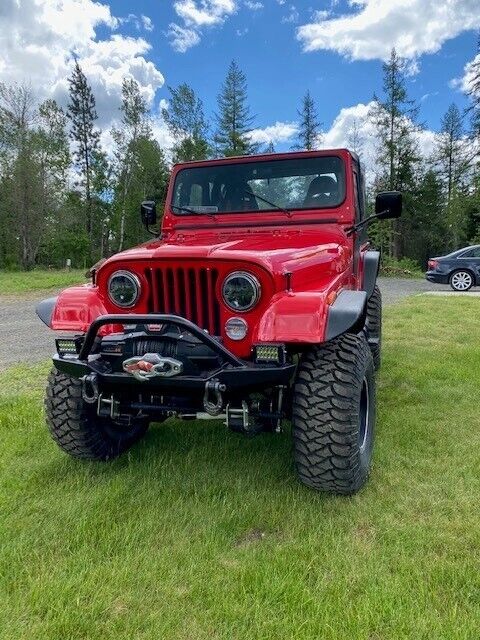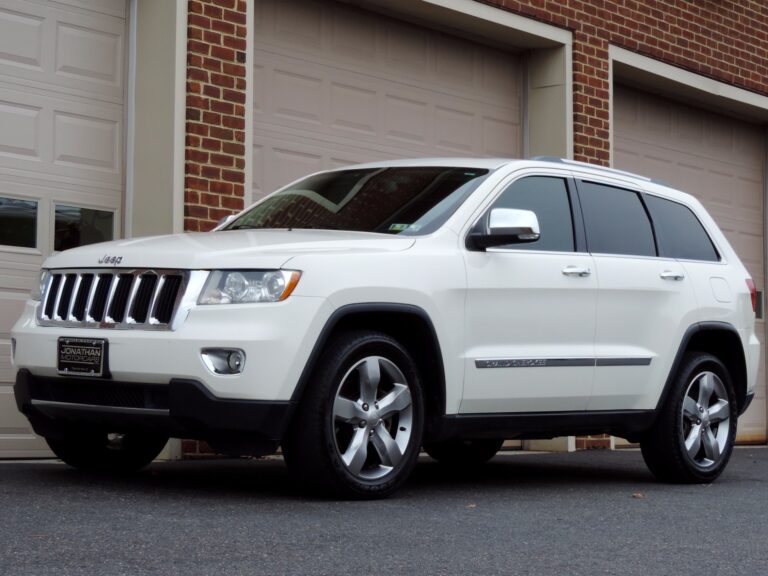2012 Jeep Grand Cherokee Lifted: The Ultimate Guide to Enhancing Your WK2
2012 Jeep Grand Cherokee Lifted: The Ultimate Guide to Enhancing Your WK2 jeeps.truckstrend.com
The 2012 Jeep Grand Cherokee, part of the WK2 generation (2011-2021), represents a remarkable blend of luxury, comfort, and formidable off-road capability. While impressive in its stock form, many enthusiasts and off-road adventurers seek to elevate its performance and aesthetics even further by lifting it. Lifting a 2012 Jeep Grand Cherokee involves modifying its suspension to increase ground clearance, allowing for larger tires and significantly enhancing its off-road prowess and visual appeal. This comprehensive guide will delve into everything you need to know about transforming your WK2 Grand Cherokee into an even more capable and commanding machine.
Why Lift Your 2012 Grand Cherokee? Beyond Just Looks
2012 Jeep Grand Cherokee Lifted: The Ultimate Guide to Enhancing Your WK2
Lifting a vehicle isn’t merely about achieving an aggressive stance; it unlocks a host of practical benefits, especially for an already capable SUV like the Grand Cherokee:
- Increased Ground Clearance: This is the primary benefit. More ground clearance means a reduced risk of scraping the undercarriage on rocks, roots, or other obstacles when navigating challenging terrain.
- Accommodation for Larger Tires: A lift provides the necessary fender clearance to fit larger, more aggressive off-road tires. Larger tires further contribute to ground clearance and offer superior traction on various surfaces, from mud and sand to rocks.
- Improved Approach, Departure, and Breakover Angles: These critical off-road metrics determine how steep an obstacle your vehicle can approach, climb over, and descend without making contact. Lifting significantly improves these angles.
- Enhanced Off-Road Capability: The combination of increased clearance and larger tires translates directly to a more confident and capable off-road experience, allowing you to tackle trails that were previously inaccessible.
- Aggressive Aesthetics: There’s no denying the visual impact. A lifted Grand Cherokee with larger tires looks more rugged, imposing, and ready for adventure, standing out from the stock crowd.
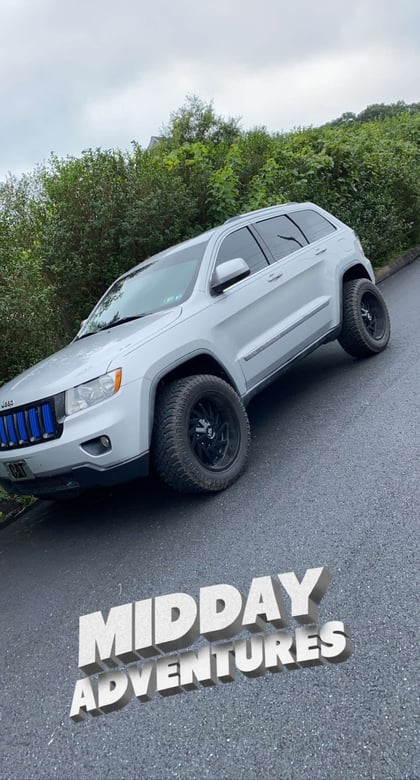
Understanding Lift Kit Types for the WK2 Platform
The 2012 Grand Cherokee (WK2) utilizes an independent front and rear suspension, which influences the types of lift kits available. Choosing the right kit depends on your budget, intended use, and desired lift height.
-
Leveling Kits:
.jpg)
- Description: Typically spacers installed on top of the front struts or new springs to raise the front end of the vehicle, leveling it with the rear.
- Lift Height: 1-2 inches (front only).
- Pros: Most affordable, easiest to install, maintains near-stock ride quality, corrects factory rake.
- Cons: Does not increase rear ground clearance, limited tire size increase.
- Ideal For: Mild aesthetic enhancement, fitting slightly larger tires, correcting front sag.
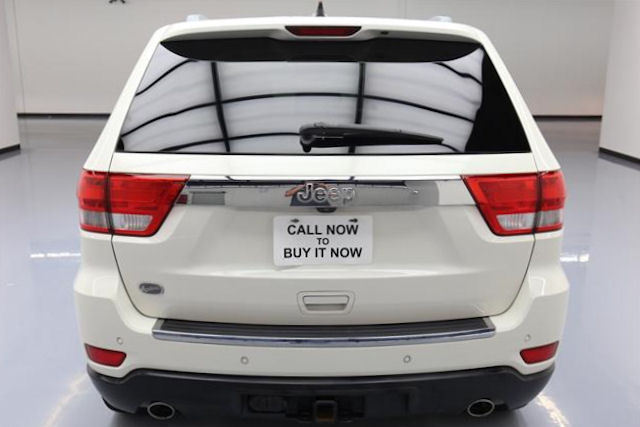
-
Spacer Lifts:
- Description: Similar to leveling kits but include spacers for both front struts and rear coil springs.
- Lift Height: 2-3 inches (front and rear).
- Pros: Relatively inexpensive, straightforward installation, provides noticeable ground clearance.
- Cons: Retains stock shocks (which can limit articulation and ride quality), can lead to premature wear on stock components if not designed well.
- Ideal For: Budget-conscious users seeking a moderate lift for light off-roading and larger tires.
-
Coil Spring Lifts (Full Suspension Lifts):
- Description: Replaces stock coil springs and often shocks/struts with taller, often stiffer, aftermarket components. May include new control arms and sway bar links.
- Lift Height: 2-4 inches.
- Pros: Improved ride quality and off-road performance over spacers, better articulation, designed to work as a system.
- Cons: More expensive, more complex installation, potential need for additional components (e.g., adjustable control arms, extended brake lines) for higher lifts.
- Ideal For: Enthusiasts seeking a balance of on-road comfort and significantly improved off-road capability.
-
Coilover Systems:
- Description: A step up from coil spring lifts, these replace the entire strut assembly with adjustable coil-over shocks. They offer superior damping, adjustability (ride height and sometimes damping), and heat dissipation.
- Lift Height: Highly variable, often 2-4 inches with adjustability.
- Pros: Best performance and ride quality, highly tunable for specific conditions, excellent articulation.
- Cons: Most expensive option, complex installation and tuning.
- Ideal For: Serious off-roaders or those prioritizing ultimate performance and ride quality.
-
Long-Arm Kits:
- Description: Primarily for extreme lifts (4+ inches), these kits replace the short factory control arms with much longer ones, relocating their mounting points on the frame. This corrects suspension geometry at extreme angles.
- Lift Height: 4+ inches.
- Pros: Maintains excellent ride quality and handling at very high lift heights, superior articulation.
- Cons: Very expensive, requires significant fabrication and cutting, permanent modification, not practical for most users.
- Ideal For: Dedicated rock crawlers and extreme off-road builds.
-
Air Suspension Modifications (for Quadra-Lift equipped WK2s):
- Description: For Overland, Summit, and some Limited trims with the factory Quadra-Lift air suspension, lift solutions involve linking or modifying the air suspension sensors to trick the system into thinking it’s at a lower height, thus inflating to a higher "normal" ride height.
- Lift Height: 1-2 inches.
- Pros: Maintains factory air ride comfort and adjustability, relatively simple.
- Cons: Limited lift height, may put more strain on air suspension components, can affect alignment.
- Ideal For: Owners of Quadra-Lift equipped vehicles who want a modest lift without sacrificing the factory air ride.
Choosing the Right Lift Kit: Key Considerations
Before committing to a lift, carefully consider these factors:
- Intended Use: Will your Grand Cherokee be a daily driver, a weekend warrior on light trails, or a hardcore off-road machine? This dictates the type and extent of the lift.
- Desired Lift Height: How much higher do you want your vehicle? Remember that higher lifts often require more ancillary modifications.
- Budget: Lift kits range from a few hundred dollars to several thousands. Don’t forget to factor in installation costs, alignment, and potentially new tires.
- Ride Quality & Comfort: Some lifts sacrifice on-road comfort for off-road performance. Decide what balance is acceptable for you.
- Tire Size Compatibility: Plan your tire size before you lift. The lift height must accommodate the tires you intend to run.
- Installation Complexity: Are you a seasoned DIY mechanic, or will you need professional installation?
Essential Components of a Grand Cherokee Lift Kit
While specific components vary by kit type and lift height, common elements include:
- Lift Springs or Spacers: To achieve the desired height.
- Shocks/Struts: Longer shocks are often required to maintain proper suspension travel, especially with coil spring lifts.
- Upper Control Arms (UCAs): For lifts over 2 inches, aftermarket UCAs are crucial to correct suspension geometry, especially camber and caster, ensuring proper alignment and preventing premature wear.
- Sway Bar End Links: Longer end links are needed to prevent the sway bar from binding or inverting at full suspension droop.
- Track Bar: For lifts over 2.5-3 inches, an adjustable front track bar (and sometimes rear) is needed to re-center the axle under the vehicle and prevent "dog walking."
- Brake Line Extensions: Essential for higher lifts to prevent stretching or damage to brake lines at full suspension droop.
- Driveshaft Considerations: For lifts over 3-4 inches, especially with specific powertrain configurations, you might encounter driveshaft vibration issues requiring a new driveshaft or pinion angle correction.
The Installation Process: DIY vs. Professional
Installing a lift kit can range from relatively simple (leveling/spacer kits) to highly complex (coilover/long-arm kits).
- DIY Installation: If you have mechanical experience, the right tools (jack, jack stands, torque wrench, spring compressor for some kits), and a clear understanding of the instructions, a basic lift kit is achievable. Allocate a full day or weekend.
- Professional Installation: For more complex kits or if you’re unsure, professional installation by a reputable off-road shop is highly recommended. They have specialized tools, expertise, and can ensure proper alignment and address any unforeseen issues. This also provides peace of mind regarding safety and performance.
Crucial Step: Regardless of who installs it, a professional wheel alignment is mandatory immediately after installation. This corrects camber, caster, and toe angles, which are significantly altered by a lift, ensuring proper handling, tire wear, and safety.
Post-Lift Adjustments, Maintenance, and Considerations
Lifting your Grand Cherokee isn’t a "set it and forget it" modification.
- Alignment: As mentioned, critical. Re-check alignment after the first few hundred miles as components settle.
- Vibrations: Monitor for any new vibrations, especially at highway speeds. This can indicate driveshaft angle issues, particularly with higher lifts.
- Tire Pressure: Larger tires often require different tire pressures than stock. Consult your tire manufacturer or an expert.
- Suspension Checks: Periodically inspect all suspension components for wear, loose bolts, or damage, especially after off-road excursions.
- Handling Changes: A lifted vehicle will have a higher center of gravity, potentially affecting on-road handling, cornering stability, and braking performance. Drive cautiously until you adapt.
- Fuel Economy: Expect a slight decrease in fuel economy due to increased aerodynamic drag and often larger, heavier tires.
- Legal & Safety Implications: Research your local state laws regarding maximum lift height and tire protrusion. Inform your insurance company about the modifications.
Cost Estimation Table for 2012 Jeep Grand Cherokee Lifted
The cost of lifting a 2012 Jeep Grand Cherokee can vary widely based on the type of lift, brand, and whether you opt for DIY or professional installation. This table provides estimated ranges.
| Lift Kit Type | Lift Height (Approx.) | Estimated Kit Cost (USD) | Estimated Professional Installation Cost (USD) | Total Est. Cost (Excl. Tires) (USD) | Notes |
|---|---|---|---|---|---|
| Leveling Kit | 1-2 inches (front) | $100 – $300 | $200 – $400 | $300 – $700 | Simple, corrects rake, minor tire size increase. |
| Spacer Lift | 2-3 inches (F&R) | $200 – $500 | $400 – $800 | $600 – $1,300 | Moderate lift, retains stock ride quality (mostly). |
| Coil Spring Lift | 2-4 inches (F&R) | $600 – $2,000 | $800 – $1,500 | $1,400 – $3,500 | Better performance, may include shocks/control arms. |
| Coilover System | 2-4+ inches (F&R) | $2,000 – $4,500+ | $1,000 – $2,000+ | $3,000 – $6,500+ | High-performance, adjustable, superior ride. |
| Long-Arm Kit | 4+ inches (F&R) | $3,000 – $7,000+ | $1,500 – $3,000+ | $4,500 – $10,000+ | Extreme off-road, requires fabrication. |
| Air Suspension Mod | 1-2 inches (F&R) | $100 – $400 | $100 – $300 | $200 – $700 | For Quadra-Lift models, retains air ride. |
| Additional Costs | $150 – $300 | Professional Alignment (Mandatory) | |||
| Additional Costs | $800 – $2,500+ | New, Larger Tires (Optional but Recommended) |
Note: These are estimates. Prices can vary significantly based on brand, specific components included, labor rates in your area, and sales/discounts.
Frequently Asked Questions (FAQ) about Lifting a 2012 Jeep Grand Cherokee
Q1: How much lift can I get without major modifications (e.g., cutting, driveshaft changes)?
A1: Generally, up to 2.5 to 3 inches of lift can be achieved with coil spring or spacer kits without requiring extensive modifications like cutting or new driveshafts. Beyond 3 inches, you’ll likely need adjustable control arms, a new track bar, and potentially address driveshaft angles.
Q2: Will lifting my Grand Cherokee void its warranty?
A2: While a lift itself won’t automatically void your entire vehicle warranty, any specific component failures that can be directly attributed to the lift kit or its installation might not be covered. It’s best to check with your dealership or a MOPAR-certified shop, especially if using MOPAR performance parts.
Q3: Do I need new tires when I lift my Grand Cherokee?
A3: While not strictly mandatory with smaller lifts, it’s highly recommended. The primary reason to lift is often to fit larger, more aggressive tires, which truly unlock the off-road benefits. Stock tires will look disproportionately small with a lift.
Q4: How does lifting affect ride quality on the road?
A4: This varies greatly by kit type. Leveling and spacer kits tend to retain near-stock ride quality. Coil spring kits can either improve or slightly stiffen the ride depending on the spring rates. Coilover systems generally offer the best ride quality and performance due to their advanced damping. Long-arm kits are designed to maintain excellent geometry and ride at extreme heights.
Q5: Is it hard to install a lift kit myself?
A5: A simple leveling or spacer kit can be a moderate DIY project for someone with mechanical aptitude and the right tools. Full coil spring or coilover kits are more involved and might require specialized tools like a spring compressor. Long-arm kits are definitely a professional job. Always prioritize safety and if in doubt, seek professional help.
Conclusion
Lifting your 2012 Jeep Grand Cherokee is a transformative modification that significantly enhances its off-road capabilities and gives it a distinct, commanding presence. By understanding the different types of lift kits, their components, and the associated considerations, you can make an informed decision that aligns with your budget, intended use, and desired performance. Remember to prioritize safety, ensure proper installation and alignment, and perform regular maintenance to enjoy your lifted WK2 for years to come. Whether you’re chasing tougher trails or simply aiming for a bolder look, a lifted Grand Cherokee is a true testament to Jeep’s spirit of adventure.

